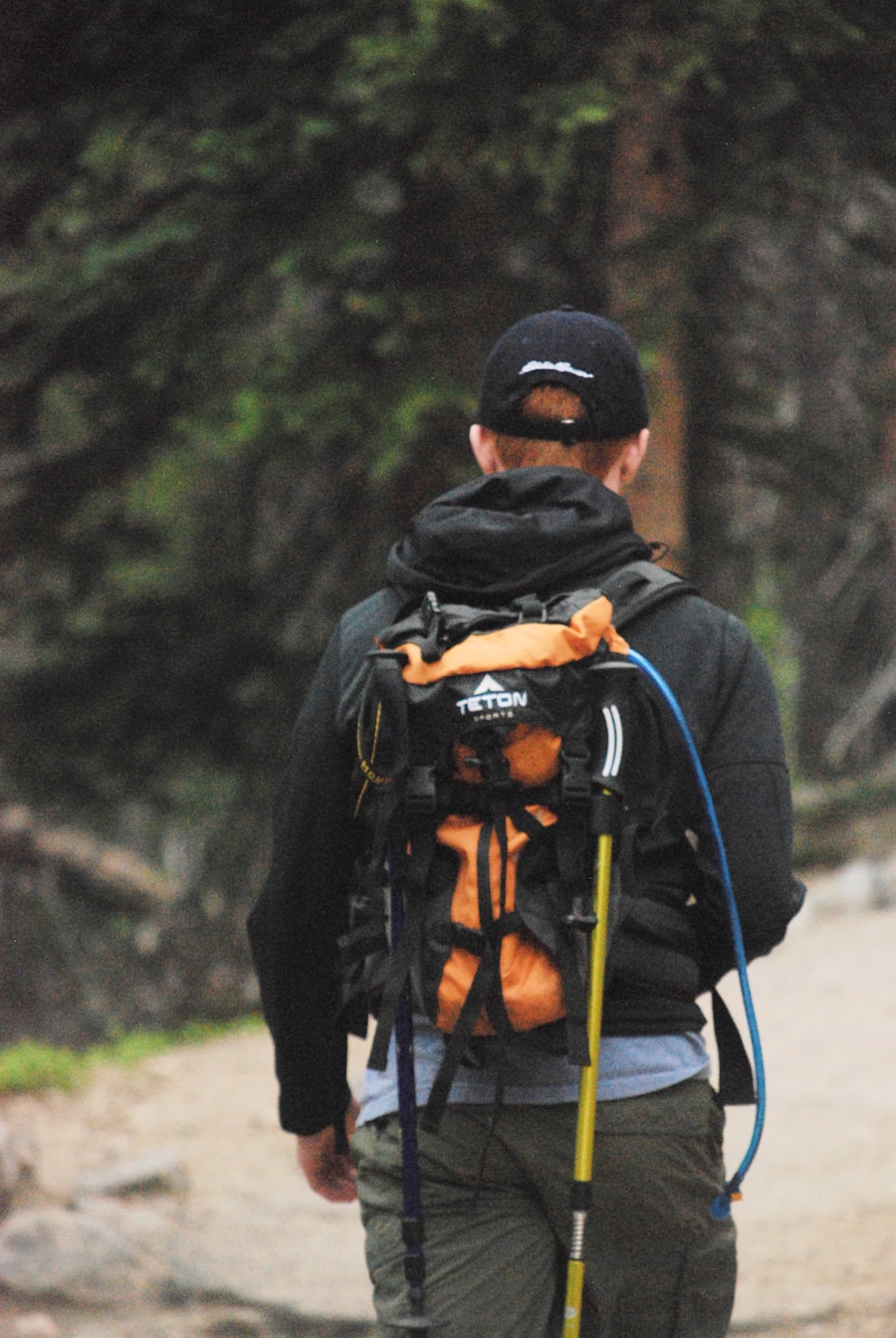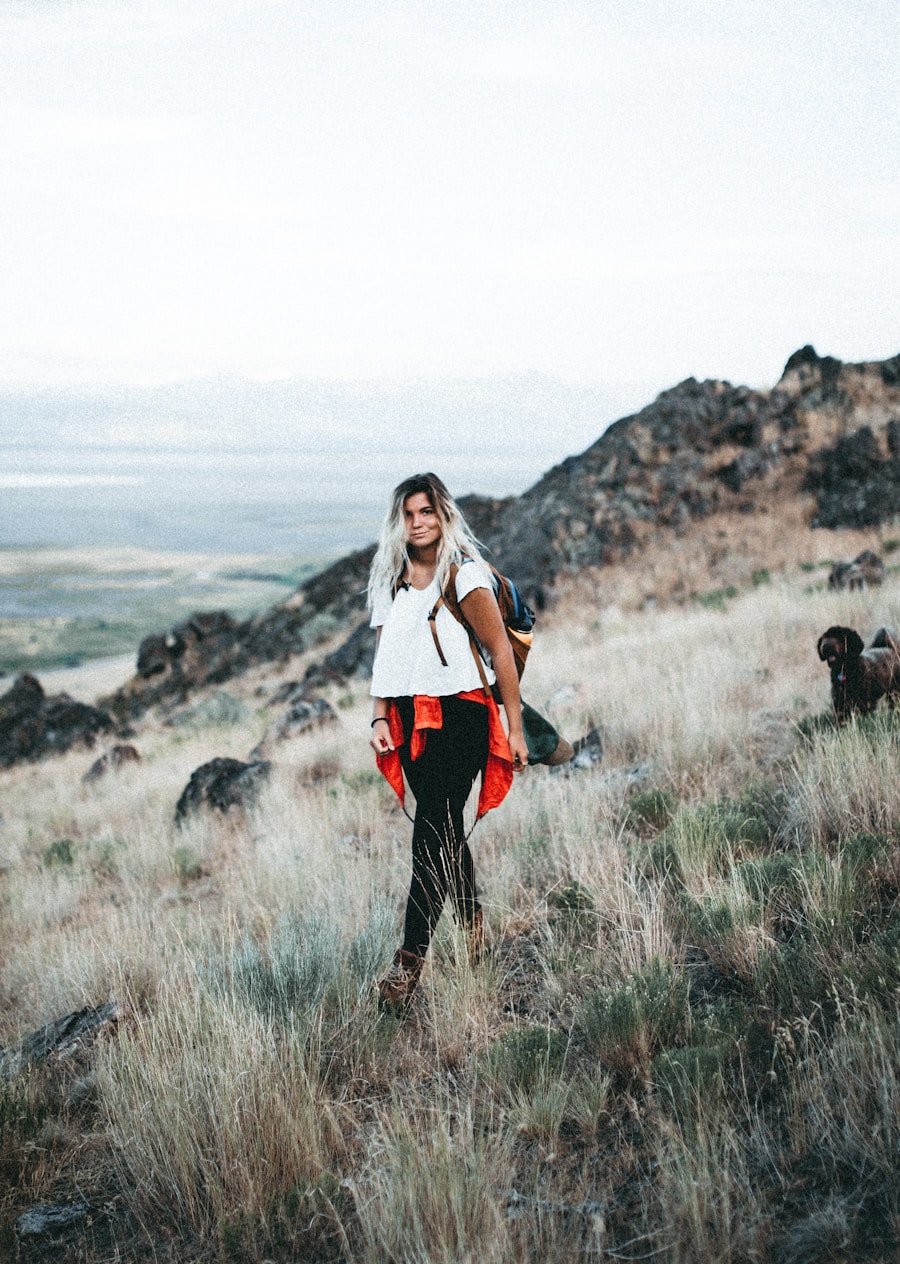When embarking on any outdoor adventure, the significance of proper footwear cannot be overstated. The right shoes or boots serve as the foundation for your entire experience, influencing comfort, stability, and overall performance. Hiking, trekking, or simply walking in nature requires footwear that can withstand various terrains while providing adequate support.
For instance, a sturdy pair of hiking boots with a good grip can prevent slips and falls on rocky paths, while also offering ankle support to reduce the risk of injuries. The materials used in the construction of these boots, such as waterproof membranes and breathable fabrics, play a crucial role in keeping your feet dry and comfortable throughout your journey. Moreover, the fit of your footwear is paramount.
Ill-fitting shoes can lead to blisters, calluses, and other foot ailments that can quickly turn an enjoyable outing into a painful ordeal. It is essential to try on footwear with the socks you plan to wear during your activities and to walk around in them to ensure they provide the right amount of space and support. Additionally, considering the type of terrain you will encounter is vital; for example, trail runners may be suitable for well-maintained paths, but if you anticipate rocky or uneven ground, a more robust hiking boot would be advisable.
Investing in quality footwear tailored to your specific needs can significantly enhance your outdoor experience.
Key Takeaways
- Proper footwear is essential for hiking to prevent blisters, provide ankle support, and offer traction on different terrains.
- Layering clothing is crucial for adapting to changing weather conditions and maintaining body temperature during hikes.
- Choosing the right backpack involves considering size, fit, and features such as padded straps and hip belts for comfort and weight distribution.
- Essential navigation tools like maps, compasses, and GPS devices are important for staying on track and finding your way in the wilderness.
- Hydration and nutrition are key for sustaining energy and preventing dehydration during hikes, so pack plenty of water and high-energy snacks.
Layering for Variable Weather Conditions
The Base Layer: Regulating Body Temperature
The base layer, typically made from moisture-wicking materials like merino wool or synthetic fabrics, sits directly against the skin and helps regulate body temperature by drawing sweat away from the body.
This is particularly important during physical activities where perspiration is inevitable.The Middle Layer: Insulation and Moisture Management
The middle layer serves as insulation, trapping heat while still allowing moisture to escape. Fleece jackets or down vests are popular choices for this layer, providing warmth without excessive bulk.
The Outer Layer: Protection from the Elements
Finally, the outer layer acts as a barrier against wind and precipitation. Waterproof and breathable jackets are essential for protecting against rain and snow while ensuring that sweat can evaporate from the inner layers. By employing this layering system, outdoor enthusiasts can remain comfortable and dry regardless of whether they encounter sunny skies or sudden downpours.
Choosing the Right Backpack

Selecting the appropriate backpack is crucial for any outdoor excursion, as it directly impacts how much gear you can carry and how comfortable you feel while doing so. The first consideration should be the size of the backpack, which is typically measured in liters. Daypacks ranging from 20 to 30 liters are ideal for short hikes, while multi-day backpacks can range from 50 to 80 liters or more for extended trips.
It’s essential to choose a size that accommodates your gear without being overly cumbersome. In addition to size, the design and features of the backpack play a significant role in its functionality. Look for adjustable straps that allow for a customized fit, as well as padded hip belts that help distribute weight evenly across your body.
Ventilation is another important factor; many modern backpacks come equipped with mesh back panels that promote airflow and reduce sweating during strenuous activities. Furthermore, consider additional features such as hydration reservoirs, external pockets for easy access to essentials, and attachment points for trekking poles or sleeping bags. A well-chosen backpack not only enhances your comfort but also ensures that you have everything you need at your fingertips.
Essential Navigation Tools
| Navigation Tool | Usage | Accuracy |
|---|---|---|
| Compass | Used by 78% of hikers | Accurate to within 2 degrees |
| GPS Device | Utilized by 65% of outdoor enthusiasts | Accuracy of 3-5 meters |
| Map and Compass | Prefered by 40% of experienced hikers | Highly accurate when used together |
Navigating through unfamiliar terrain requires reliable tools to ensure safety and direction. Traditional maps and compasses remain invaluable resources for outdoor enthusiasts, providing a tangible way to understand the landscape and plan routes effectively. A topographic map offers detailed information about elevation changes, water sources, and trails, which can be critical when planning a hike or trek.
Learning how to read these maps and use a compass is an essential skill that can significantly enhance your navigation capabilities. In addition to traditional navigation tools, modern technology has introduced GPS devices and smartphone applications that can aid in route planning and tracking. These digital tools often come equipped with features such as real-time location tracking and preloaded maps of various trails.
However, it is crucial to remember that technology can fail; batteries may die or devices may become damaged in harsh conditions. Therefore, carrying a backup navigation method—such as a physical map and compass—is always advisable. By combining traditional navigation skills with modern technology, adventurers can confidently explore new areas while minimizing the risk of getting lost.
Hydration and Nutrition Essentials
Staying hydrated and properly nourished during outdoor activities is vital for maintaining energy levels and overall health. Water is the most critical resource; dehydration can lead to fatigue, dizziness, and impaired cognitive function. Carrying an adequate supply of water is essential, whether through water bottles or hydration reservoirs integrated into backpacks.
It’s also wise to consider water purification methods if you plan on sourcing water from natural bodies like rivers or streams. Portable filters or purification tablets can ensure that you have access to safe drinking water throughout your journey. Nutrition plays an equally important role in sustaining energy levels during outdoor activities.
High-energy snacks such as trail mix, energy bars, or jerky are excellent choices for quick refueling on the go. These foods are typically lightweight and easy to pack while providing essential nutrients needed for endurance activities. For longer excursions, planning meals that are easy to prepare yet nutritious is crucial; options like dehydrated meals or pre-cooked rice packs can save time and effort while ensuring you receive adequate sustenance.
Balancing hydration with proper nutrition will help maintain stamina and enhance your overall outdoor experience.
Protection from the Elements: Sun, Rain, and Bugs

Sun Protection
Prolonged exposure to UV rays can lead to sunburns and increase the risk of skin cancer over time. Wearing broad-spectrum sunscreen with a high SPF is essential for protecting exposed skin, even on cloudy days when UV rays can still penetrate through clouds.
Rain and Footwear Protection
Rain protection is equally important for maintaining comfort during outdoor activities. Waterproof jackets and pants are essential gear for anyone venturing into unpredictable weather conditions. Look for breathable materials that allow moisture from sweat to escape while keeping rain at bay. Furthermore, waterproof footwear will help keep your feet dry in wet conditions, preventing blisters and discomfort during hikes.
Insect Repellent
Insect repellent is another critical component of protection from the elements; mosquitoes and ticks can pose health risks through bites. Using repellents containing DEET or natural alternatives can help ward off these pests while enjoying nature.
Safety Essentials: First Aid Kit and Emergency Supplies
Safety should always be a top priority when engaging in outdoor activities. A well-stocked first aid kit is an essential item that every adventurer should carry. This kit should include items such as adhesive bandages, antiseptic wipes, gauze pads, adhesive tape, pain relievers, and any personal medications required by members of your group.
Additionally, including items like tweezers for removing splinters or ticks and a whistle for signaling in case of emergencies can enhance your preparedness. Beyond first aid supplies, having emergency gear on hand is crucial for unexpected situations. A multi-tool or knife can serve various purposes—from preparing food to making repairs—while a fire starter kit ensures you can create warmth or cook food if necessary.
A space blanket provides insulation in case of sudden temperature drops or emergencies where warmth is needed quickly. Furthermore, carrying a flashlight or headlamp with extra batteries will help navigate in low-light conditions or during nighttime emergencies. Being equipped with these safety essentials allows adventurers to respond effectively to unforeseen circumstances.
Additional Gear: Trekking Poles, Headlamps, and More
While the basics are essential for any outdoor excursion, additional gear can significantly enhance comfort and performance during activities like hiking or trekking. Trekking poles are one such item that many outdoor enthusiasts find invaluable; they provide stability on uneven terrain and reduce strain on joints during descents or ascents. By distributing weight more evenly across the body, trekking poles can help prevent fatigue over long distances.
Headlamps are another piece of gear that should not be overlooked; they offer hands-free illumination when navigating in low-light conditions or setting up camp after dark. Unlike traditional flashlights, headlamps allow users to keep their hands free for tasks such as cooking or setting up tents while providing adequate visibility in all directions. Additionally, considering items like gaiters can protect against mud and debris while hiking through challenging environments.
Incorporating these additional pieces of gear into your outdoor kit not only enhances safety but also improves overall enjoyment during your adventures in nature. Each item serves a specific purpose that contributes to a more comfortable experience while exploring the great outdoors.
If you’re planning a hiking trip, you’ll want to make sure you have the right gear, including the best clothing for the adventure. One important aspect to consider is what to wear hiking, and a related article on TakeTravelInfo.com provides some great tips on this topic. Check out their article here for some helpful advice on choosing the best hiking attire for your next outdoor excursion.
Love travel? Join Our Facebook Community
FAQs
What should I wear for hiking?
When hiking, it’s important to wear moisture-wicking clothing to keep you dry and comfortable. This includes a moisture-wicking base layer, a breathable and lightweight shirt, and quick-drying pants or shorts. It’s also important to wear sturdy and supportive hiking boots or shoes.
What type of socks should I wear for hiking?
For hiking, it’s best to wear moisture-wicking socks that are made of wool or synthetic materials. These socks will help keep your feet dry and prevent blisters.
Should I wear a hat while hiking?
Wearing a hat while hiking is a good idea, especially in sunny or hot conditions. A hat can help protect your face and neck from the sun, and can also help keep you cool by providing shade.
What type of jacket should I bring for hiking?
It’s important to bring a lightweight and waterproof jacket when hiking, as weather conditions can change quickly. Look for a jacket that is breathable and has adjustable features like a hood and cuffs.
Do I need to wear sunscreen while hiking?
Yes, it’s important to wear sunscreen while hiking to protect your skin from the sun’s harmful rays. Choose a sunscreen with a high SPF and reapply it regularly, especially if you’re sweating or swimming.
Should I wear sunglasses while hiking?
Wearing sunglasses while hiking is a good idea, especially in sunny conditions. Look for sunglasses that provide UV protection and are designed for outdoor activities.
